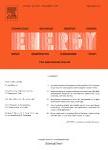版权所有:内蒙古大学图书馆 技术提供:维普资讯• 智图
内蒙古自治区呼和浩特市赛罕区大学西街235号 邮编: 010021

作者机构:Khon Kaen Univ Dept Agr Engn Fac Engn Khon Kaen 40002 Thailand King Mongkuts Inst Technol Ladkrabang Dept Agr Engn Fac Engn Bangkok 10520 Thailand Khon Kaen Univ Dept Agr Engn North East Res Grp Appl Engn Important CropsFac Engn Khon Kaen 40002 Thailand Khon Kaen Univ Dept Agr Engn Biosensing & Field Robot Lab KKU Fac Engn Khon Kaen 40002 Thailand
出 版 物:《ENERGY》 (能)
年 卷 期:2021年第220卷
页 面:119698-119698页
核心收录:
学科分类:0820[工学-石油与天然气工程] 08[工学] 0807[工学-动力工程及工程热物理]
基 金:Thailand Research Fund (TRF) Thailand [MRG6280078]
主 题:Elemental composition Biofuel pellets Line-scan hyperspectral imaging Machine learning algorithm Wavelength selection method Partial least squares regression
摘 要:The use of biomass pellets as a renewable energy source is increasing, leading to the need for rapid assessment of biofuel pellet quality for production monitoring. The purpose of this work was to use line scan near-infrared (NIR) hyperspectral image technology coupled with chemometric tools to assess the elemental components of biomass pellets. The parameters influencing model performance were investigated, i.e. wavelength and spectral pretreatment technique. Either full wavelength or partial wavelength selected using interval successive projections algorithm (iSPA) and interval genetic algorithm (iGA) were investigated. Either raw spectra or pretreated spectra were used for model development. The models were developed using partial least squares regression (PLSR). The most effective model for the prediction of carbon (C), hydrogen (H), and nitrogen (N) content was developed using iGA wavelength selection and standard normal variate (SNV) spectral pretreatment and provided the highest accuracy with a coefficient of determination of prediction set (r2p) and standard error of prediction (SEP) of 0.83 and 1.33%;0.84 and 0.17%;and 0.90 and 0.098%, respectively. The model could be used for quality assurance. The S content model was poor and not recommended. The relationship between pellet chemical parameters and reflectance characteristics could be used for predicting C, H, and N of biomass pellets. (c) 2021 Elsevier Ltd. All rights reserved.